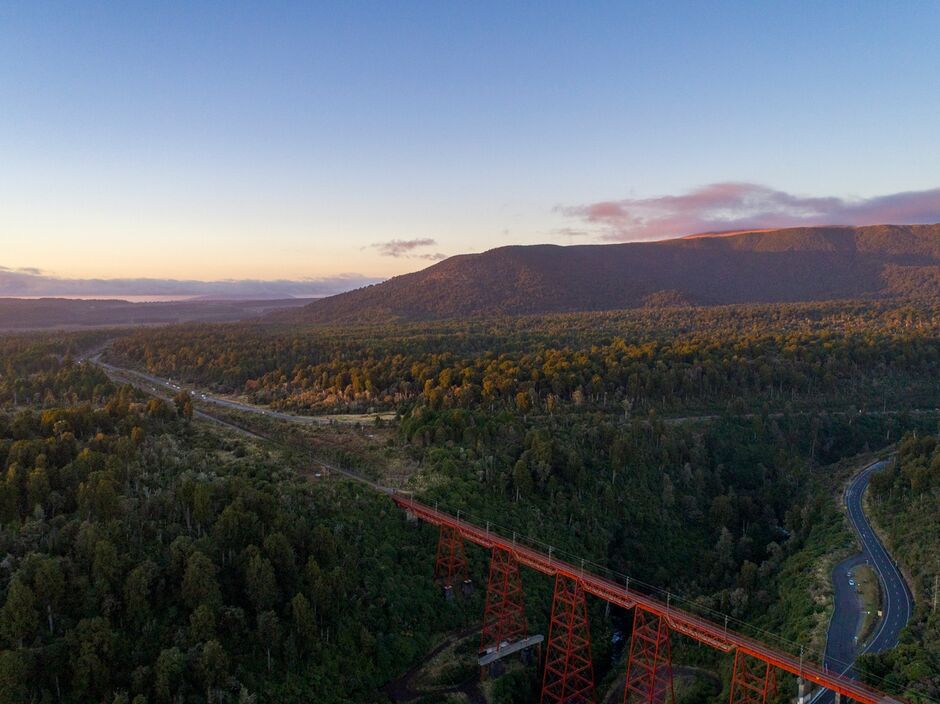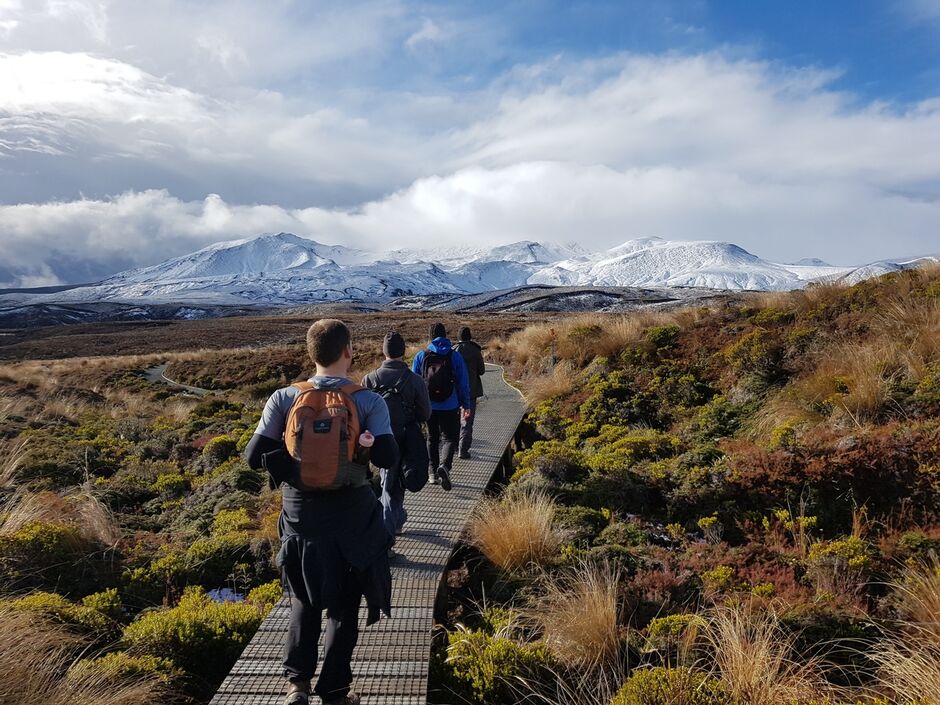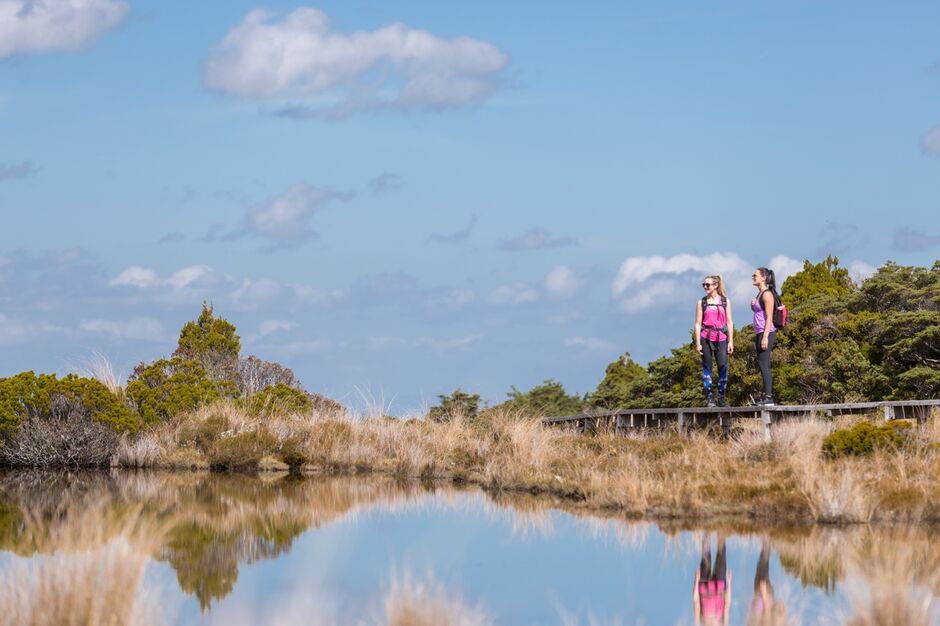-
Popular places to visit
Popular things to do
Helpful tips
Here's a few useful links to help with planning your trip to Aotearoa New Zealand.
-
Please note: DOC is introducing a booking system for the 2023/2024 season, where visitors using any part of the Tongariro Alpine Crossing track should reserve slots in advance. More info here.

Centred upon three volcanoes - Tongariro, Ngauruhoe and Ruapehu - Tongariro National Park is home to some of New Zealand’s most dramatic landscapes.
For the latest information on access to Tongariro National Park please refer to the Department of Conservation's Tongariro Facebook page.
If you are wondering if the Tongariro National Park is worth the visit, wonder no more. The park will reward you with unparalleled beauty which will delight hikers as well as nature enthusiasts on the hunt for sites to remember for a lifetime.
From the iconic Tongariro Crossing to the tranquil Taranaki falls, each section of the park is enchanting.


Tongariro became New Zealand’s first national park in 1887. Just over 100 years later, the park was awarded dual UNESCO World Heritage status for both its cultural significance to Māori, as well as its outstanding natural features. It is one of only three World Heritage sites in Aotearoa New Zealand, and it was the first in the world to be given Dual World Heritage status.
The 80,000-hectare park is a testament to nature’s artistic brilliance, showcasing of volcanic wonders including emerald lakes, old lava flows, steaming craters, colourful silica terraces and peculiar alpine gardens. It is an environment of staggering beauty and diversity.
Three volcanoes – Ruapehu, Ngauruhoe and Tongariro – mark the southern limits of the Taupō Volcanic Zone, the horseshoe-shaped series of volcanic phenomena that make up the Pacific Ocean’s ‘Ring of Fire’.
Volcanic activity started here around two million years ago and continues to this day. Ruapehu and Tongariro, which date back before the last ice age, are two of the most active composite volcanoes in the world, with Ruapehu last erupting in 1996. Ngauruhoe – geologically considered a ‘vent’ – last erupted in 1975.
Before you venture into Tongariro National Park it's essential to check the current volcanic activity.




The walk known as the Tongariro Northern Circuit is served by four Department of Conservation(opens in new window) ‘Great Walk’ huts. DOC also has a number of 'Serviced' and 'Basic' huts in other parts of the park.
Inside the national park boundary, Whakapapa Village has a range of accommodation including campsites, lodges and motels.
Various types of accommodation can be found in and around the nearby towns of Tūrangi, National Park Village and Ohakune, Raetihi, Taumarunui.
Whatever kind of accommodation you choose, it will pay to book in advance during peak season (December to March).
There are many ways to get to the park:
DOC encourages visitors doing the Tongariro Alpine Crossing to book a shuttle or arrange for someone to drop them off and pick them up, because the Tongariro Alpine Crossing takes 7-8 hours to walk and ends on the other side of the mountain.
Shuttles are available to and from the park to the main towns nearby. Shuttle include connections to and from Whakapapa village, Ohakune, Taumarunui, Whakapapa Village and Tūrangi and Taupō. They can be booked at a visitor centre (isite) or online(opens in new window). They can also be arranged with accommodation providers.
The park is located near many alpine towns. The main entrance to the park is Whakapapa village, located west of the park, near Whakapapa ski field. The town of Ohakune is located south of the park, near Tūroa ski field. Parking space at the Mangatepopo and Ketetahi carparks is limited, first come first served and cannot be booked. There are 4 hour parking restrictions in place and rangers check compliance from Labour weekend in October until May each year.
The nearest airport to the park is Taupō, located 1 hour and 20 minute drive from Whakapapa village. You can easily combine your trip to the park with a break in Taupō(opens in new window).